Heat Transfer Performance of a Downhole Electric Tubular Resistive Heater
Abstract
:1. Introduction
2. Design and Simulations
2.1. Electric Tubular Heater Design
2.2. Mathematical Models
2.3. Data Reduction
2.4. Grid Independence Validation
3. Results and Discussion
3.1. Effect of Inner Diameter of Heating Tube
3.2. Effect of Length of Heating Pipe
3.3. Effect of Inlet Flow Rate
3.4. Compared with Helical-Baffled Electric Heaters
4. Conclusions
Author Contributions
Funding
Institutional Review Board Statement
Informed Consent Statement
Conflicts of Interest
References
- Jiang, X.; Han, X.; Cui, Z. New technology for the comprehensive utilization of Chinese oil shale resources. Energy 2007, 32, 772–777. [Google Scholar] [CrossRef]
- Yang, Q.; Qian, Y.; Kraslawski, A.; Zhou, H.; Yang, S. Framework for advanced exergoeconomic performance analysis and optimization of an oil shale retorting process. Energy 2016, 109, 62–76. [Google Scholar] [CrossRef]
- Wang, S.; Jiang, X.; Han, X.; Tong, J. Investigation of Chinese oil shale resources comprehensive utilization performance. Energy 2012, 42, 224–232. [Google Scholar] [CrossRef]
- Brandt, A.R. Converting oil shale to liquid fuels: Energy inputs and greenhouse gas emissions of the Shell in situ conversion process. Environ. Sci. Technol. 2008, 42, 7489–7495. [Google Scholar] [CrossRef] [PubMed]
- Kang, Z.; Zhao, Y.; Yang, D.; Tian, L.; Li, X. A pilot investigation of pyrolysis from oil and gas extraction from oil shale by in-situ superheated steam injection. J. Pet. Sci. Eng. 2020, 186, 106785. [Google Scholar] [CrossRef]
- Branch, M.C. In-situ combustion retorting of oil shale. Prog. Energy Combust. Sci. 1979, 5, 193–206. [Google Scholar] [CrossRef]
- Crawford, P.M.; Killen, J.C. New challenges and directions in oil shale development technologies. ACS Symp. Ser. 2010, 1032, 21–60. [Google Scholar]
- Huang, C.; Hou, H.; Yu, G.; Zhang, L.; Hu, E. Energy solutions for producing shale oil: Characteristics of energy demand and economic analysis of energy supply options. Energy 2020, 192, 116601–116603. [Google Scholar] [CrossRef]
- Wang, Z.; Lü, X.; Li, Q.; Sun, Y.; Wang, Y.; Deng, S.; Guo, W. Downhole electric heater with high heating efficiency for oil shale exploitation based on a double-shell structure. Energy 2020, 211, 118539. [Google Scholar] [CrossRef]
- Gu, H.; Chen, Y.; Wu, J.; Yang, S. Numerical study on performances of small incline angle helical baffle electric heaters with axial separation. Appl. Therm. Eng. 2017, 126, 963–975. [Google Scholar] [CrossRef]
- Guo, W.; Wang, Z.; Sun, Z.; Sun, Y.; Lü, X.; Deng, S.; Qu, L.; Yuan, W.; Li, Q. Experimental investigation on performance of downhole electric heaters with continuous helical baffles used in oil shale in-situ pyrolysis. Appl. Therm. Eng. 2019, 147, 1024–1035. [Google Scholar] [CrossRef]
- Yang, S.; Chen, Y.; Wu, J.; Gu, H. Influence of baffle configurations on flow and heat transfer characteristics of unilateral type helical baffle heat exchangers. Appl. Therm. Eng. 2018, 13, 739–748. [Google Scholar] [CrossRef]
- Wang, M.C.; Chen, Y.P.; Wu, J.F.; Dong, C. Numerical simulation of the heat transfer performance of trisection helical baffled electric heaters. Numer. Heat Transf. Part A Appl. 2016, 69, 85–96. [Google Scholar] [CrossRef]
- Tang, H.; Chen, Y.; Wu, J.; Yang, S. Numerical investigation of the performances of axial separation helical baffle heat exchangers. Energy Convers. Manag. 2016, 126, 400–410. [Google Scholar] [CrossRef]
- Delouei, A.A.; Sajjadi, H.; Mohebbi, R.; Izadi, M. Experimental study on inlet turbulent flow under ultrasonic vibration: Pressure drop and heat transfer enhancement. Ultrason. Sonochem. 2019, 51, 151–159. [Google Scholar] [CrossRef] [PubMed]
- Delouei, A.A.; Atashafrooz, M.; Sajjadi, H.; Karimnejad, S. The thermal effects of multi-walled carbon nanotube concentration on an ultrasonic vibrating finned tube heat exchanger. Int. Commun. Heat Mass Trans. 2022, 135, 106098. [Google Scholar] [CrossRef]
- Kathrein, H.; Freund, F. Electrical conductivity of magnesium oxide single crystal below 1200 K. J. Phys. Chem. Solids 1983, 44, 177–186. [Google Scholar] [CrossRef]
- Ogunsola, O.I.; Hartstein, A.; Ogunsola, O. Oil Shale: A Solution to the Liquid Fuel Dilemma. In ACS Symposium Series; American Chemical Society: Washington, DC, USA, 2013; Volume 1032. [Google Scholar]
- Wang, X.; Ni, Q.H.; Zhou, H.; Kong, Q.P. Cyclic creep behavior of a nickel base alloy. Mater. Sci. Eng. A 1990, 123, 207–211. [Google Scholar] [CrossRef]
- Salameh, T.; Tawalbeh, M.; Juaidi, A.; Abdallah, R.; Hamid, A. A novel three-dimensional numerical model for PV/T water system in hot climate region. Renew. Energy 2021, 164, 1320–1333. [Google Scholar] [CrossRef]
- Wang, M.C.; Chen, Y.P.; Wu, J.F.; Dong, C. Heat transfer enhancement of folded helical baffle electric heaters with one-plus-two U-tube units. Appl. Therm. Eng. 2016, 102, 586–595. [Google Scholar] [CrossRef]
- Wang, Z.; Guo, W.; Sun, Y.; Li, Q.; Deng, S.; Zhang, P.; Zhao, S.; Chen, Q.; Liu, Z. Fluid Electric Heater in Pit. Chinese Patent CN CN208168849U, 30 November 2018. [Google Scholar]
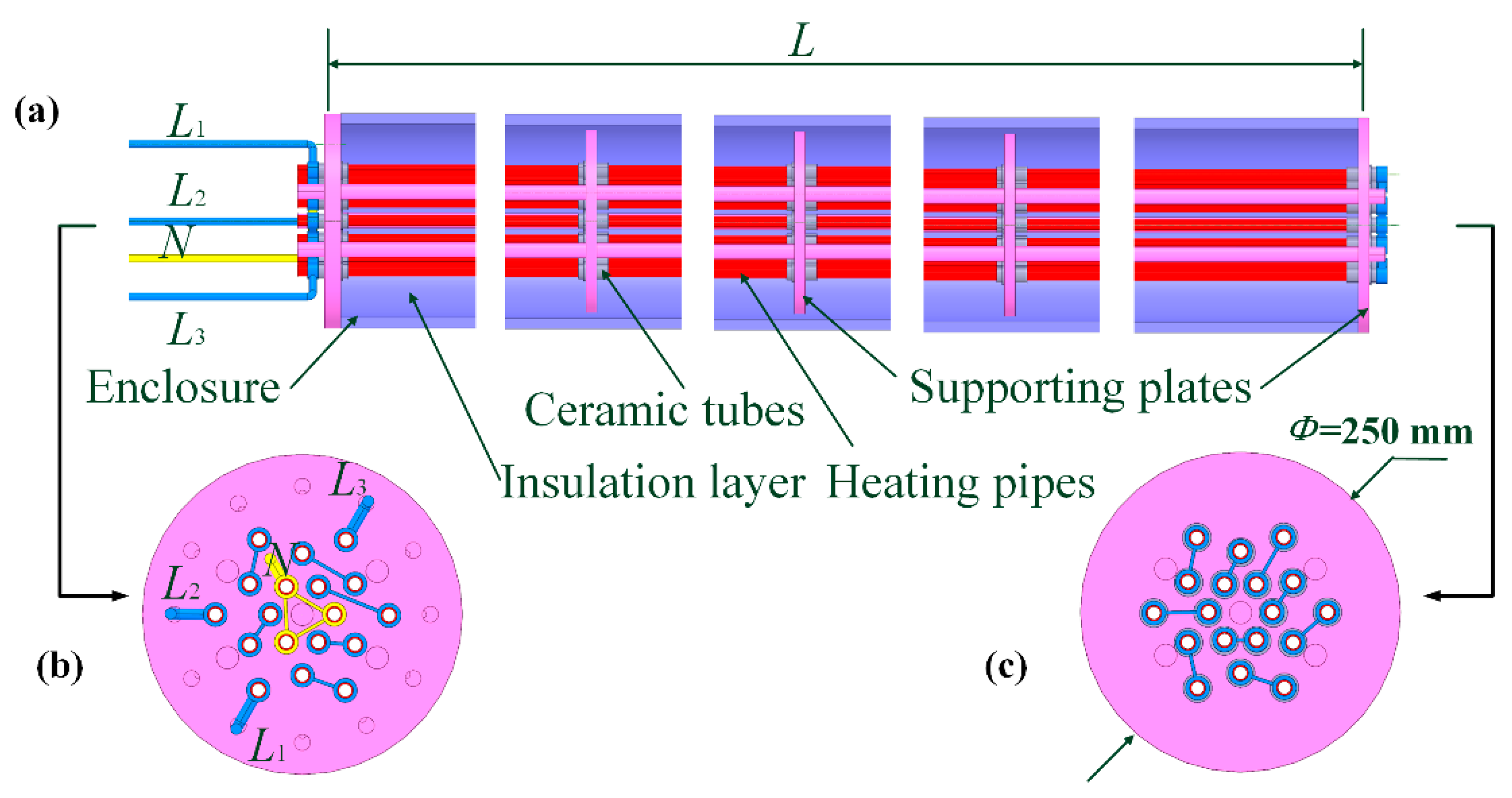

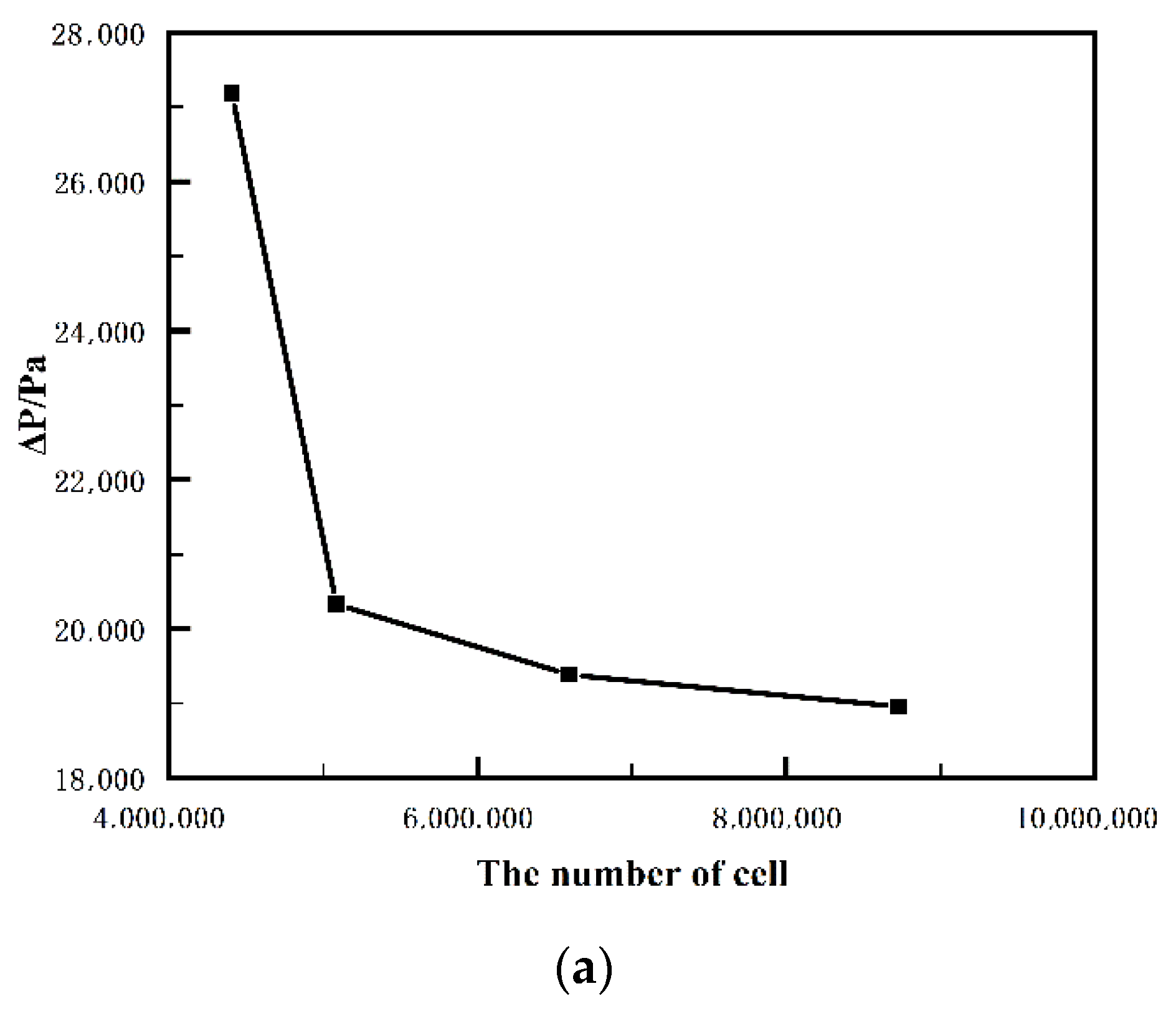
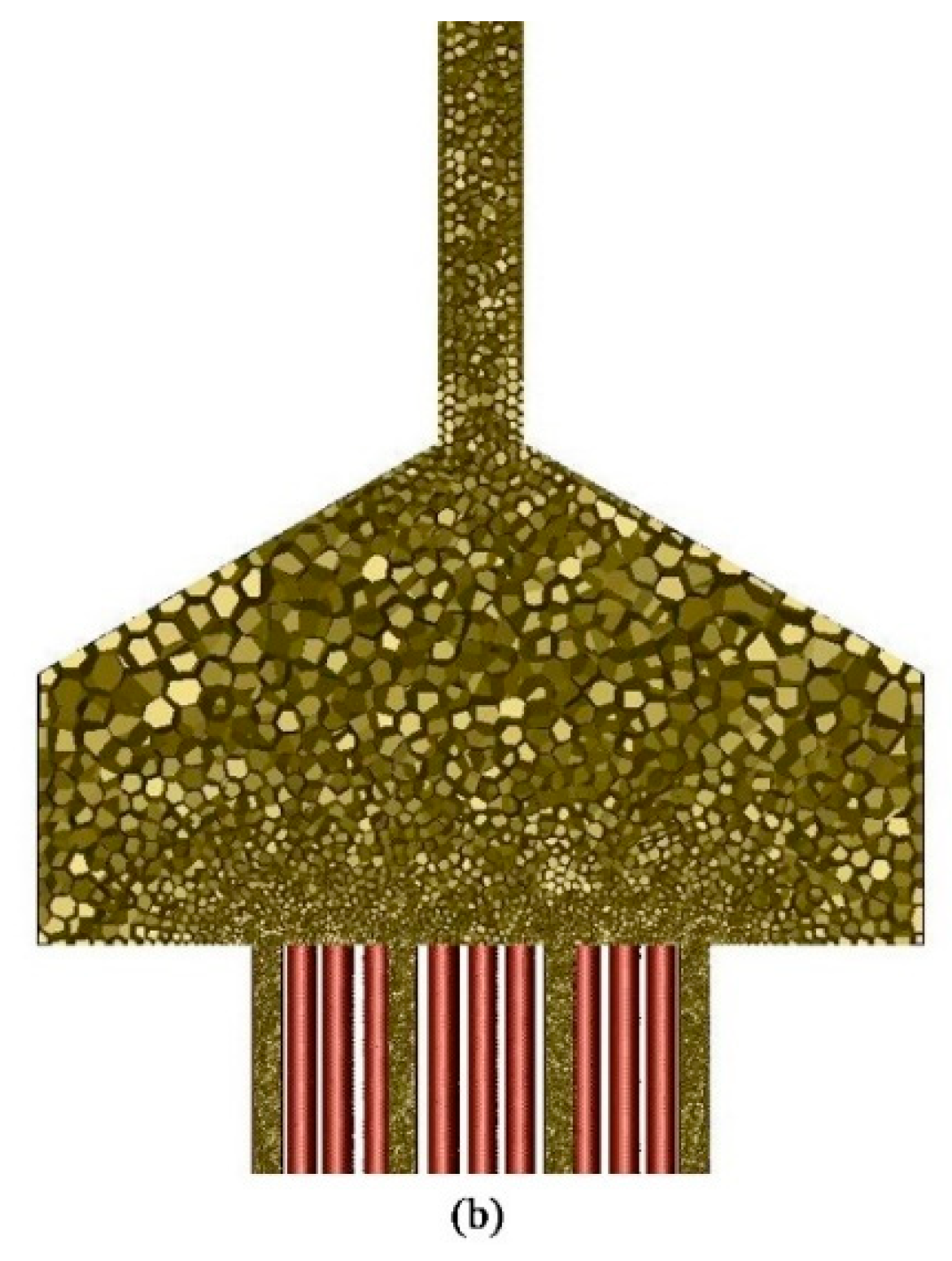
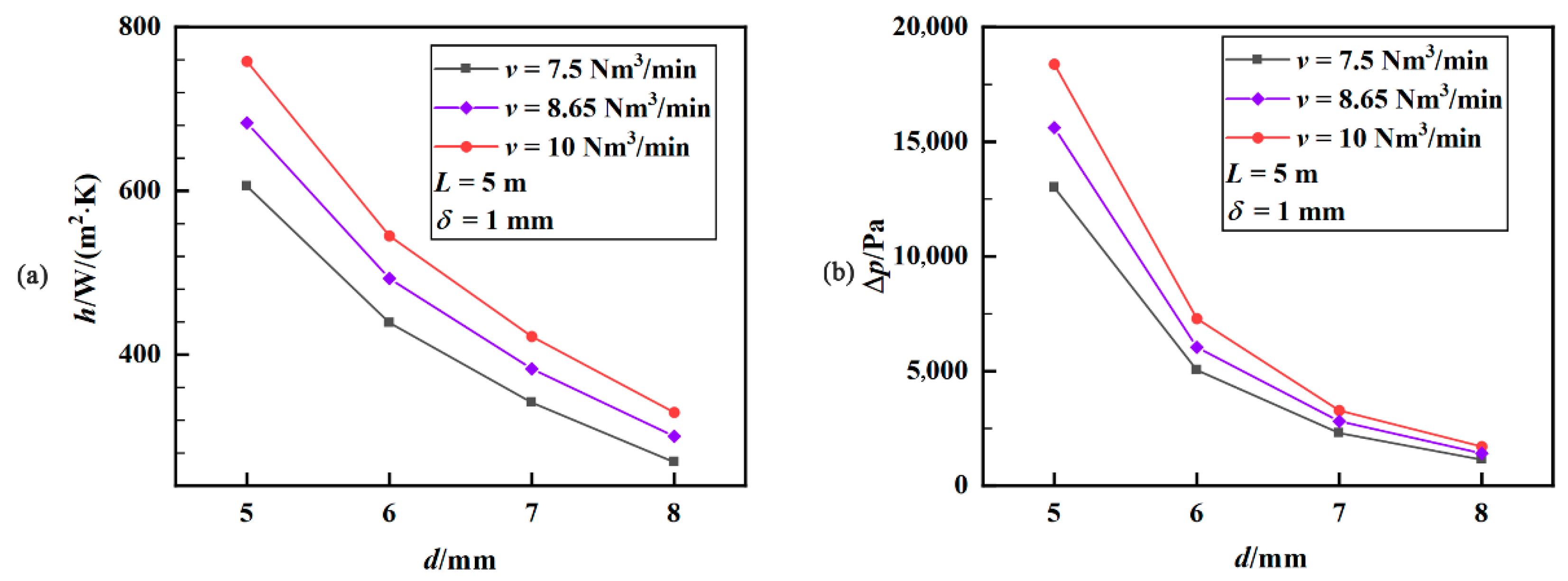
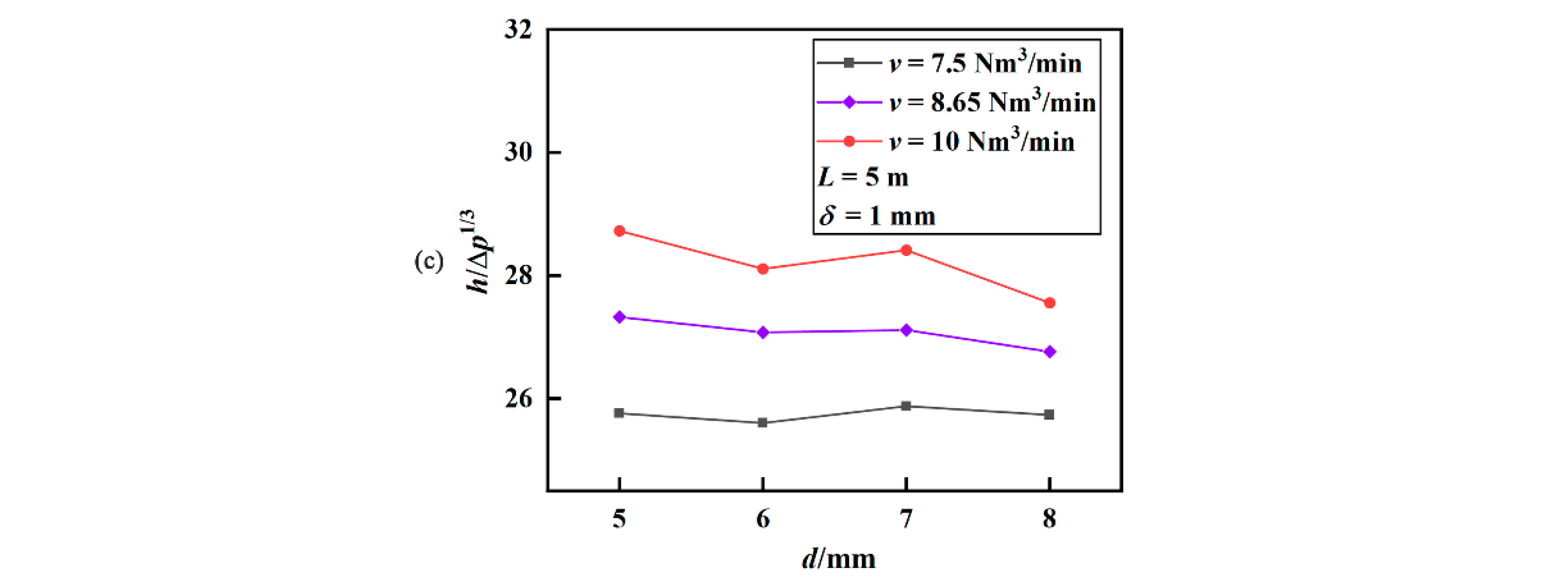


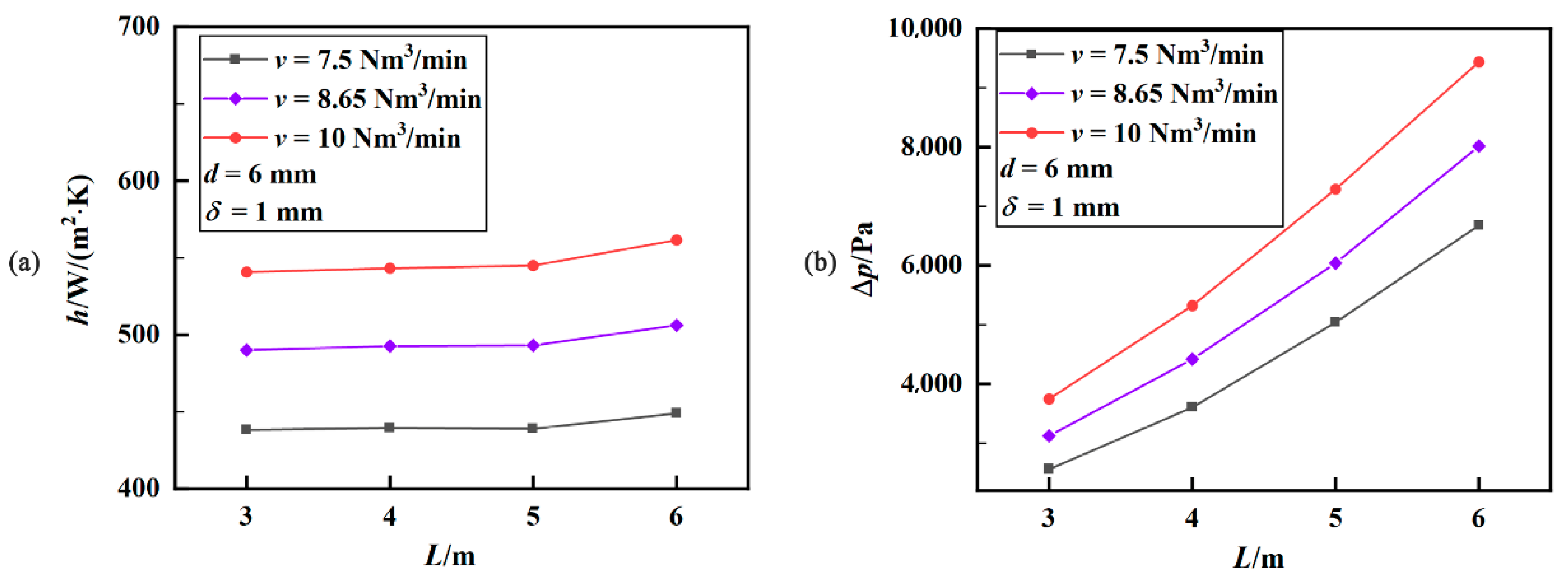


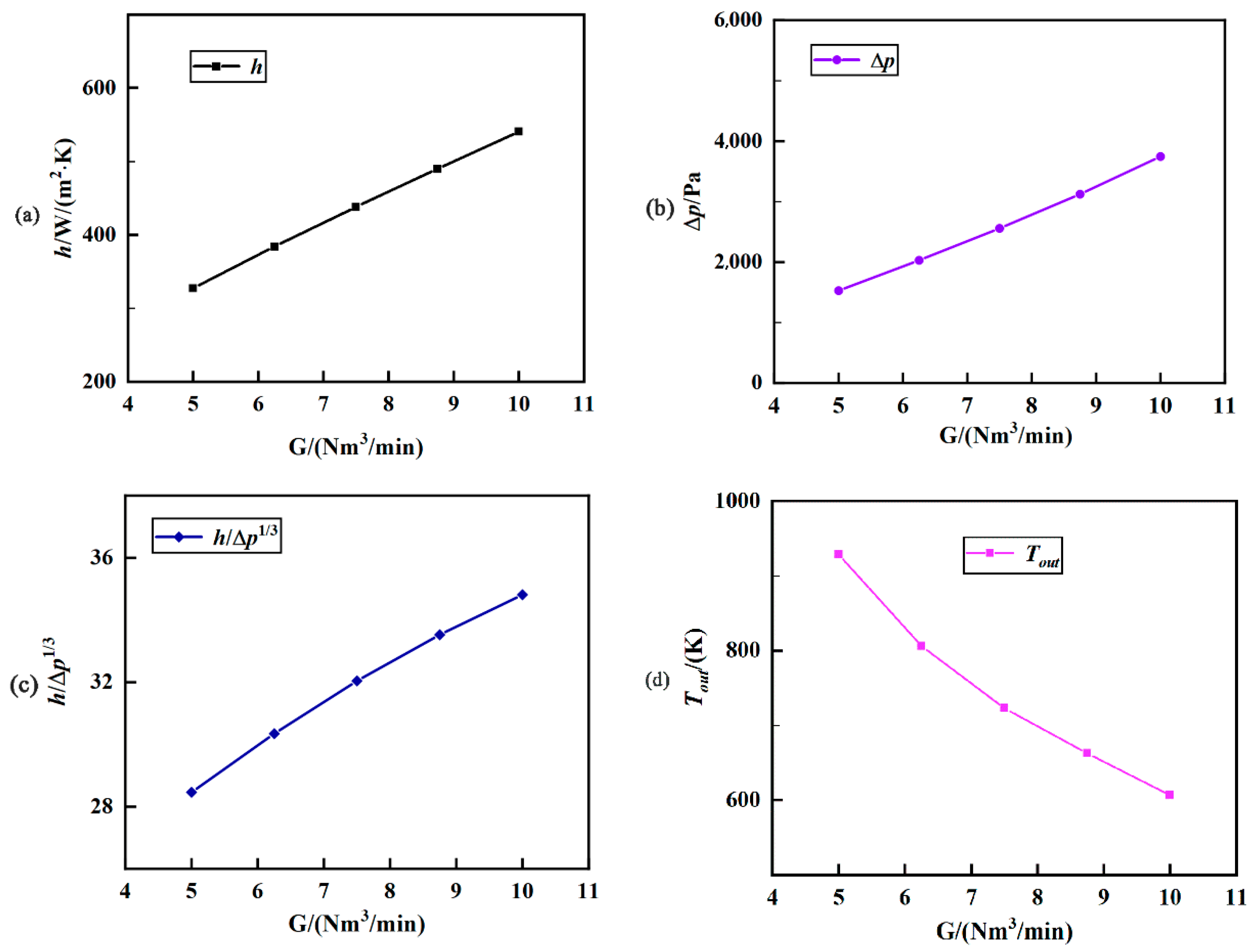

| Physical Parameters | A0 | A1 | A2 | A3 | A4 |
|---|---|---|---|---|---|
| ρ (kg/m3) | 346.2 | −1.284 | 0.002130 | −1.623 × 10−6 | 4.609 × 10−10 |
| k (W/m·K) | 0.02062 | 2.284 × 10−5 | 5.489 × 10−8 | −4.225 × 10−11 | 1.118 × 10−14 |
| Cp (J/kg·K) | 2057 | −5.108 | 0.009570 | −7.465 × 10−6 | 2.125 × 10−9 |
| μ (Pa·s) | 9.105 × 10−6 | 3.566 × 10−8 | 5.645 × 10−12 | −1.339 × 10−14 | 4.991 × 10−18 |
| F(x) = A0 + A1 T + A2 T2 + A3 T3 + A4 T4 | |||||
| Performances | Helical-Baffled Electric Heater [21] | Present Tubular Electric Heater |
|---|---|---|
| Heating power, Q (kW) | 120 | 120 |
| Flow rate, G (Nm3/min) | 19.05 | 19.05 |
| Working pressure, (MPa) | 0.47 | 0.47 |
| Outer diameter of heating tube, (mm) | 12 | 8 |
| Effective length, (mm) | 2462 | 4000 |
| Total heat transfer area, (m2) | 4.87 | 2.26 |
| Tube maximum temperature, (K) | - | 689 |
| Average heat transfer coefficient, h (W/m2 K) | 84.1 | 781.4 |
| Pressure drop, (Pa) | 1125 | 328,419 |
| Comprehensive index, h/Δp1/3 | 8.09 | 11.33 |
Publisher’s Note: MDPI stays neutral with regard to jurisdictional claims in published maps and institutional affiliations. |
© 2022 by the authors. Licensee MDPI, Basel, Switzerland. This article is an open access article distributed under the terms and conditions of the Creative Commons Attribution (CC BY) license (https://creativecommons.org/licenses/by/4.0/).
Share and Cite
Chen, Y.; Zeng, H.; Wang, J.; Chen, H.; Zhu, J. Heat Transfer Performance of a Downhole Electric Tubular Resistive Heater. Appl. Sci. 2022, 12, 9508. https://doi.org/10.3390/app12199508
Chen Y, Zeng H, Wang J, Chen H, Zhu J. Heat Transfer Performance of a Downhole Electric Tubular Resistive Heater. Applied Sciences. 2022; 12(19):9508. https://doi.org/10.3390/app12199508
Chicago/Turabian StyleChen, Yu, Hao Zeng, Jianli Wang, Haoran Chen, and Jianjun Zhu. 2022. "Heat Transfer Performance of a Downhole Electric Tubular Resistive Heater" Applied Sciences 12, no. 19: 9508. https://doi.org/10.3390/app12199508
APA StyleChen, Y., Zeng, H., Wang, J., Chen, H., & Zhu, J. (2022). Heat Transfer Performance of a Downhole Electric Tubular Resistive Heater. Applied Sciences, 12(19), 9508. https://doi.org/10.3390/app12199508






